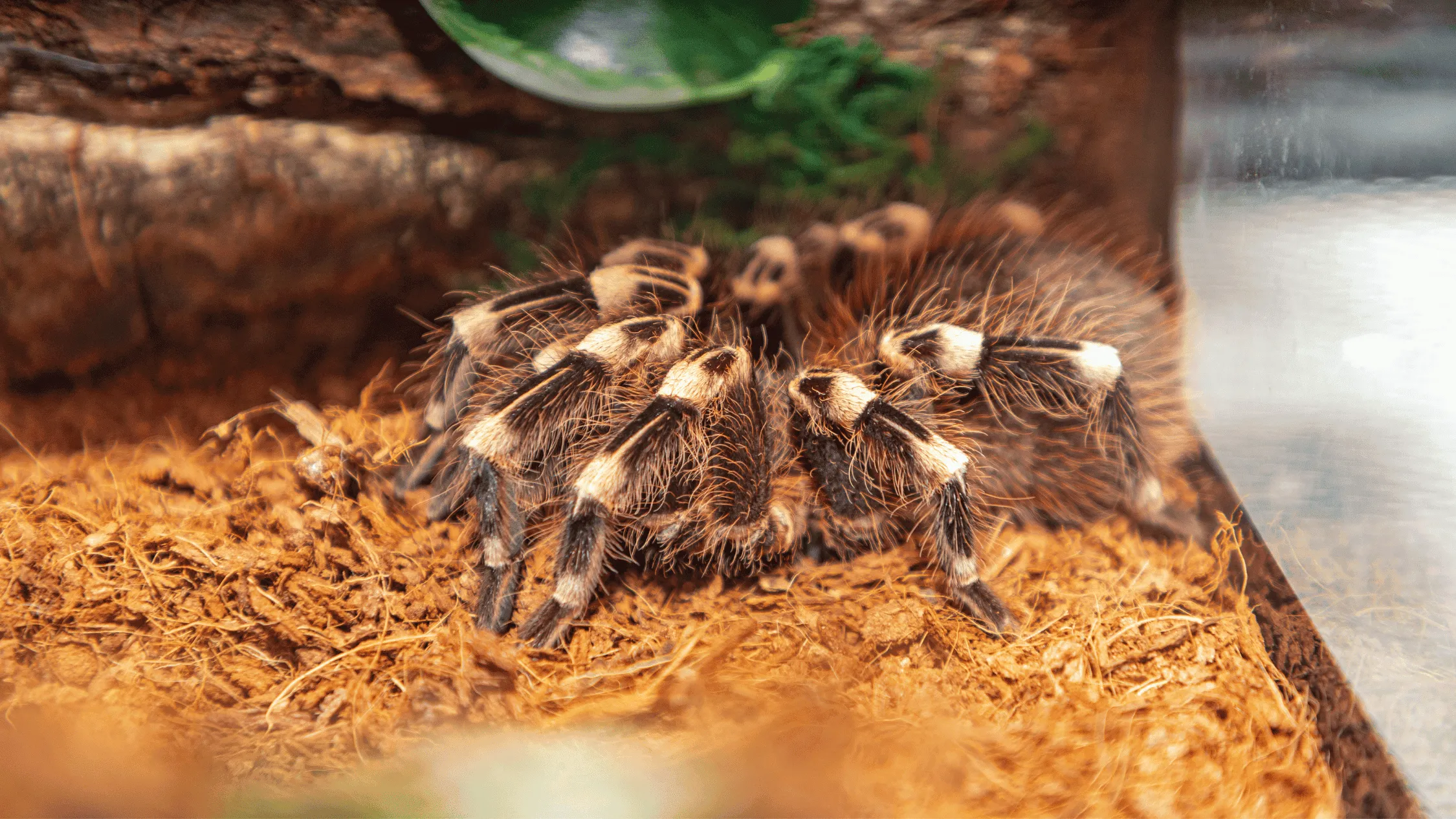Tarantula Acquisition 5 Awesome Tips
Bringing a tarantula into your home can be an incredibly rewarding experience. These fascinating creatures offer a unique perspective on the animal kingdom, and their relatively low-maintenance care makes them a popular choice for beginner exotic pet owners. However, responsible tarantula ownership requires knowledge and preparation. This guide offers five awesome tips to help you successfully acquire and care for a tarantula, ensuring both your safety and the well-being of your new pet. From selecting the right species to understanding their needs, this article will equip you with the essential information needed to embark on this exciting journey.
Researching Tarantulas Thoroughly
Before acquiring a tarantula, comprehensive research is paramount. This involves understanding their natural habitats, behaviors, and specific care requirements. Different species have vastly different needs; some are more docile, while others are more defensive. Some thrive in humid environments, while others prefer arid conditions. Ignoring this crucial step can lead to a stressed and unhealthy tarantula, and a disappointing experience for you. Utilize online resources, books, and reputable breeders to gather as much information as possible. Familiarize yourself with the specific needs of the species you are considering, including their diet, enclosure requirements, and potential lifespan. This preliminary research is the cornerstone of successful tarantula ownership.
Understanding Tarantula Species

Tarantulas, though often grouped, are incredibly diverse. They come in various sizes, colors, and temperaments. Some popular beginner-friendly species include the Chilean Rose Hair tarantula, known for its docile nature and relatively low care requirements, and the Mexican Red Knee, recognized for its striking coloration. More experienced keepers might opt for the Cobalt Blue tarantula, known for its vibrant blue coloration, but also for its potential defensiveness. Understanding the specific characteristics of each species is crucial. Consider the tarantula’s adult size, its venom potency (although most tarantula venom is not life-threatening to humans, it can be painful), and its general temperament. Researching these aspects will assist in selecting a species that is a good fit for your lifestyle and experience level. Don’t be afraid to ask experienced keepers for advice!
Choosing the Right Tarantula for You
The selection process involves more than just picking the most attractive tarantula. Your lifestyle, experience level, and the resources you have available all play a significant role. If you’re a beginner, opt for a docile, hardy species that is less prone to defensive behaviors. Consider the tarantula’s adult size; a larger species requires a larger enclosure and more space. Research the tarantula’s lifespan; some species can live for over 20 years, which is a long-term commitment. Assess your living environment. Do you have a secure, temperature-controlled space where the tarantula can thrive? Can you consistently provide the necessary food, water, and environmental conditions? Choosing the right tarantula is about finding a species that aligns with your ability to meet its needs, providing a safe and enriching environment for both the tarantula and the owner.
Selecting a Healthy Tarantula
When acquiring a tarantula, prioritize its health and well-being. Observe the tarantula carefully before purchase. Look for a plump abdomen, which indicates it is well-fed and hydrated. Check for any signs of parasites, such as mites, which can be detrimental to a tarantula’s health. Ensure the tarantula is active and alert, not lethargic or unresponsive. Healthy tarantulas have clear eyes and move with confidence. Ask the breeder or seller about the tarantula’s feeding history, molting history, and overall health. A reputable breeder will be transparent about their tarantulas’ care and health, and should be willing to answer any questions you might have. Avoid purchasing a tarantula that appears emaciated, has missing limbs, or shows any signs of illness. A healthy start is crucial for a long and fulfilling life for your pet.
Preparing Your Tarantula Habitat

A well-prepared habitat is essential for a tarantula’s health and happiness. This involves creating a safe and enriching environment that mimics their natural habitat. The enclosure should be escape-proof, appropriately sized for the tarantula’s species and size, and designed to provide the necessary environmental conditions. The substrate, the material lining the bottom of the enclosure, should be appropriate for the species and should provide adequate moisture retention and burrowing opportunities. Additional elements such as hides, water dishes, and climbing structures can further enrich the habitat. Setting up the habitat before you acquire your tarantula allows you to establish the necessary environmental conditions, like humidity and temperature, ensuring a smooth transition for your new pet.
Choosing the Right Enclosure
The enclosure should be appropriately sized. Too small, and the tarantula will feel cramped and stressed; too large, and it may have difficulty finding its food. The enclosure should be secure, with a tight-fitting lid to prevent escapes. Glass or acrylic enclosures are common choices. Ensure the enclosure is well-ventilated, but avoid large openings that could allow the tarantula to escape. The size of the enclosure depends on the species and the size of the tarantula. A good rule of thumb is to provide a space that is at least three times the tarantula’s leg span in width. The height of the enclosure should be sufficient for the tarantula to molt without difficulty. Consider the tarantula’s natural behavior when choosing the enclosure. Terrestrial species, which live on the ground, require more floor space, while arboreal species, which live in trees, need more vertical space and branches.
Providing the Right Substrate
The substrate serves multiple purposes, including providing a surface for the tarantula to walk on, absorbing waste, maintaining humidity, and providing a burrowing environment for certain species. The choice of substrate depends on the species’ needs. For most terrestrial species, a mixture of coco fiber, peat moss, and a small amount of vermiculite is a good choice. This mixture holds moisture well and allows the tarantula to burrow. Arboreal species may benefit from a substrate that allows for climbing, such as a mixture of coco fiber and sphagnum moss. Avoid substrates that are toxic or could injure the tarantula. The depth of the substrate should be sufficient for the tarantula to burrow if it is a species that burrows. The substrate should be regularly spot-cleaned to remove any waste and should be completely replaced every few months to prevent the buildup of harmful bacteria.
Maintaining Optimal Humidity and Temperature

Maintaining the correct temperature and humidity levels is critical for a tarantula’s health. Most tarantulas thrive in temperatures between 75 and 85 degrees Fahrenheit. Use a thermometer to monitor the temperature inside the enclosure. Humidity levels also vary depending on the species. Some species require high humidity (70-80%), while others prefer drier conditions (50-60%). Use a hygrometer to measure the humidity levels. You can increase humidity by misting the enclosure with water, providing a water dish, or using a substrate that retains moisture. Ensure adequate ventilation to prevent the buildup of mold and mildew. Avoid placing the enclosure in direct sunlight or near heat sources, which can cause extreme temperature fluctuations. Consistency in temperature and humidity is crucial for the tarantula’s well-being.
Feeding Your Tarantula Appropriately
Feeding your tarantula is a crucial aspect of its care. Tarantulas are carnivores and require a diet of insects. The frequency and amount of feeding depend on the tarantula’s age, size, and species. It’s important to offer the correct food items, the right amount, and to be aware of their molting cycles. Overfeeding can lead to health problems, while underfeeding can stunt growth. Understanding the dietary needs of your tarantula is a key factor in its long-term health and survival. A consistent feeding schedule is also essential, and you’ll need to be prepared to provide a regular supply of food items.
Choosing the Right Food
The staple diet for tarantulas typically consists of insects. Crickets, mealworms, and roaches are common choices. The size of the food should be appropriate for the size of the tarantula; generally, the prey should be no larger than the tarantula’s body. Varying the diet can provide a more balanced nutritional profile. You can occasionally offer other insects, such as waxworms or superworms, but these should be offered sparingly due to their high-fat content. It is essential to ensure that the insects you feed your tarantula are free from pesticides and parasites. You can purchase commercially bred insects or, if you have space, you can breed your own food source.
Feeding Frequency and Amounts

Feeding frequency depends on the tarantula’s age and growth rate. Spiderlings, or young tarantulas, typically need to be fed more frequently, sometimes daily or every other day. As the tarantula matures, you can reduce the feeding frequency to once or twice a week. Adult tarantulas may only need to be fed every few weeks. Observe your tarantula’s abdomen. A plump abdomen indicates that the tarantula is well-fed. Avoid overfeeding, as this can lead to health problems. Remove any uneaten food within 24 hours to prevent the buildup of mold and bacteria. Always provide fresh water in a shallow dish.
Handling Your Tarantula Responsibly
While tarantulas can be fascinating to observe, handling them is not always necessary and, in some cases, can be dangerous. Tarantulas are fragile, and a fall can be fatal. Handling can also stress the tarantula, leading to defensive behaviors. Before considering handling, it’s crucial to understand the risks involved and to take appropriate precautions. With careful consideration and the correct knowledge of their behavior, you can learn to safely handle your tarantula. It’s vital to be aware of the potential dangers and take necessary safety measures.
Understanding Tarantula Behavior
Understanding tarantula behavior is the first step in safe handling. Tarantulas have different temperaments depending on the species. Some species are more docile and tolerant of handling, while others are more skittish and defensive. Tarantulas can exhibit various behaviors, such as flicking urticating hairs (small, irritating hairs) as a defense mechanism, raising their front legs in a threat display, or attempting to flee. Knowing these behaviors and recognizing the signs of stress can help you avoid being bitten or triggering a defensive response. Always approach your tarantula slowly and calmly, and observe its behavior closely. If the tarantula appears stressed or defensive, it is best to avoid handling it.
Safe Handling Techniques

If you choose to handle your tarantula, do so with extreme caution and only if the tarantula is calm and appears receptive. Handle the tarantula over a soft surface, such as a bed or a carpet, in case it falls. Avoid sudden movements and handle the tarantula gently. Never squeeze or grab the tarantula. Allow the tarantula to walk onto your hand. Keep your movements slow and deliberate. Be aware of the tarantula’s movements and body language. If the tarantula shows any signs of stress or defensiveness, gently place it back into its enclosure. It is generally recommended to handle tarantulas as little as possible, as it can be stressful for them. Always wash your hands thoroughly after handling your tarantula.
Ongoing Tarantula Care and Maintenance
Caring for a tarantula is an ongoing process that requires consistent attention and maintenance. This includes regular habitat cleaning, monitoring the tarantula’s health, and providing proper care. By establishing a regular care routine, you can help ensure your tarantula thrives. With consistent care and attention, your pet tarantula can live a long and healthy life.
Regular Habitat Cleaning
Regular cleaning is essential to maintain a healthy environment for your tarantula. Spot-clean the enclosure at least once a week to remove any uneaten food, feces, or shed exoskeletons. Completely replace the substrate every few months, or as needed, to prevent the buildup of harmful bacteria and waste products. Clean the water dish regularly and provide fresh, clean water. When cleaning the enclosure, remove the tarantula to a secure container, such as a deli cup, to prevent escape. Use a mild, unscented soap and water to clean the enclosure and any decorations. Rinse thoroughly and allow everything to dry completely before returning the tarantula to its habitat.
Monitoring Tarantula Health

Regularly monitor your tarantula’s health for any signs of illness or distress. Look for signs of parasites, such as mites, which can be found on the tarantula or in its enclosure. Observe the tarantula’s eating habits, activity levels, and overall behavior. A healthy tarantula should be active and alert, with a plump abdomen. If you notice any changes in your tarantula’s behavior, such as lethargy, loss of appetite, or unusual postures, consult with a veterinarian or experienced tarantula keeper. Be aware of the molting process; during molting, tarantulas may stop eating and become less active. Do not disturb a tarantula during molting.
